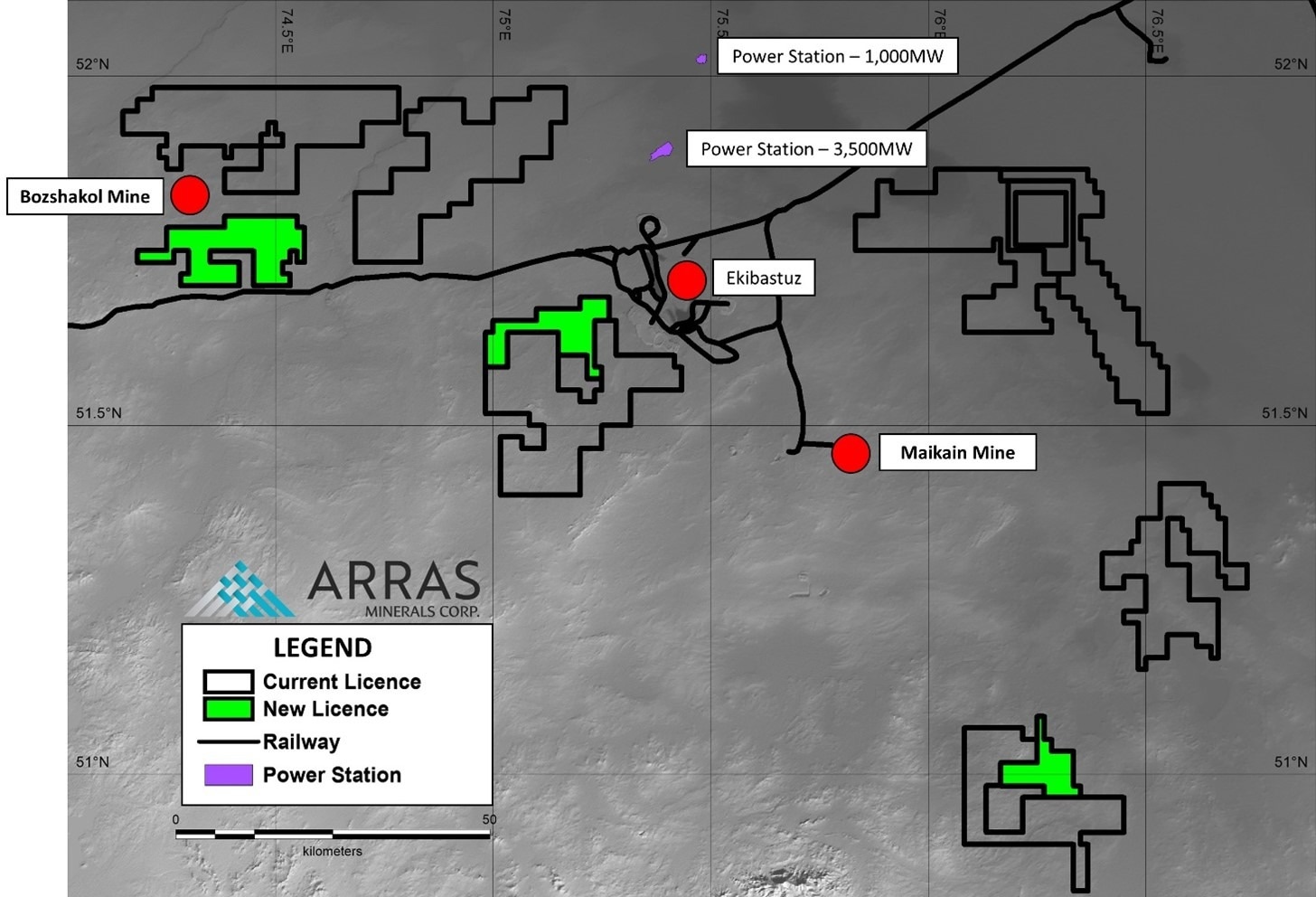Arras Minerals Corp has reported the acquisition of three extra mineral exploration licenses located in Pavlodar Province, Kazakhstan.
 Arras’ mineral exploration licenses in northeastern Kazakhstan, showing the newly granted licenses. Also shown is the location of Arras’ exploration office in the city of Ekibastuz and the producing Bozshakol and Maikain mines. Image Credit: Arras Minerals Corp.
Arras’ mineral exploration licenses in northeastern Kazakhstan, showing the newly granted licenses. Also shown is the location of Arras’ exploration office in the city of Ekibastuz and the producing Bozshakol and Maikain mines. Image Credit: Arras Minerals Corp.
The new licenses retained by the local subsidiary of the Company span a total of 364 km2 in northeastern Kazakhstan.
Highlights:
A sum of three new mineral exploration licenses covering 364 km2 has been granted by the Ministry of Industry and Innovational Development, Government of Kazakhstan, thereby raising the total land package of the Company in northeastern Kazakhstan to over 3,300 km2.
- The license acquisitions also reinforce the position of the Company as the biggest license holder in the highly prospective Bozshakol-Chingiz metallogenic belt.
- All licenses are situated within a 120 km radius of the operational base of Arras in the city of Ekibastuz, Pavlodar Province, thereby enabling affordable exploration.
- Digitization, compilation, and interpretation of Soviet-era geological and geophysical datasets for the new licenses have determined several targets for epithermal, porphyry, volcanic-hosted massive sulfide, and orogenic gold mineralization.
- Arras has fixed the third-largest license package prospective for copper-gold in the Fortescue Metals Group and Republic of Kazakhstan behind Rio Tinto.
Tim Barry spoke regarding the acquisition of the new license areas stating the following.
We are capitalizing on our position as an early player in the highly promising Bozshakol-Chingiz belt and have added valuable licenses to our portfolio. Last year, we completed our first field season and the results of our examination of Soviet-era data sets and recent geophysical surveys have led us to make these acquisitions.
Tim Barry, CEO, Arras Minerals Corp
Barry stated, “The Company continues to seek opportunities to enhance its project portfolio and we anticipate the analysis of the over 16,000 soil samples collected during the field season to be finished in the coming months. This will precede the start of our regional field program in May, where we plan to follow up on newly identified high-priority targets.”